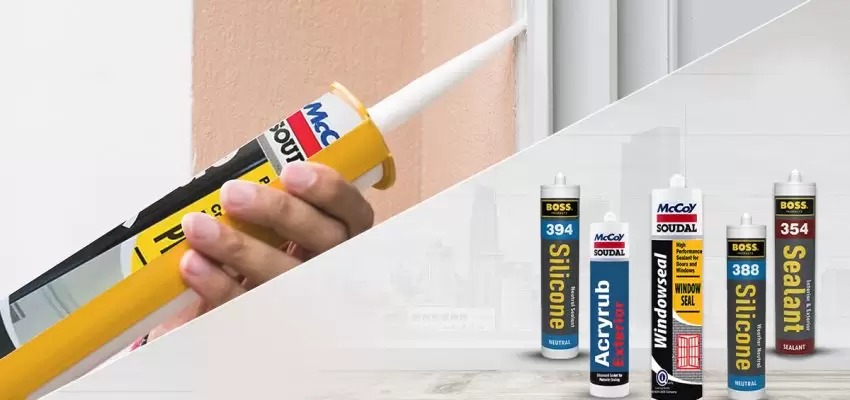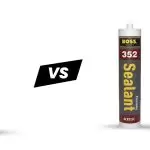Sealants play a critical role in construction and maintenance projects as the first line of defense against water infiltration, air penetration, corrosion, and contamination. With hundreds of formulations available, choosing the optimal sealant for your application shouldn’t be taken lightly. But with so many technical nuances across adhesive chemistries and performance capabilities, the selection process can get confusing. This guide breaks down key decision factors to consider when determining the best sealing solution for your unique needs.
Post your Requirement
| Term |
Definition |
| Sealant | A sealant is a substance used to seal gaps, joints, and seams in various materials and surfaces, preventing the penetration of air, water, dust, or other substances. Sealants are commonly used in construction, automotive, and manufacturing industries for waterproofing and weatherproofing purposes. |
| Sealant Online | Sealant online refers to the availability of sealant products for purchase through online platforms or e-commerce websites. Customers can browse through a variety of sealant options, compare prices, and make purchases conveniently from the comfort of their homes or offices. |
| Sealant Price | Sealant price refers to the cost of purchasing sealant products, which can vary depending on factors such as brand, type, quantity, and quality. Prices may also differ between offline retail stores and online platforms, as well as geographical locations and market demand. |
Types of Sealants
Sealants play a crucial role in construction, protecting against water ingress, air leakage, and environmental factors. There are seven common types of sealants available in the market, each with its unique properties, advantages, and applications. You can find seven types of adhesives widely available in the market and are very common in construction. They differ a lot due to the cost, performance, and application of the substrate property. Following are the seven types of these adhesives with their properties:
- Latex Sealants: These water-based sealants are easy to clean and suitable for interior applications where there are small gaps and minimal movement. They are paintable and cost-effective, but they may shrink over time.
- Acrylic Sealants: Solvent-based acrylic sealants are UV resistant and suitable for exterior and commercial applications. They do not shrink, but they can be challenging to apply compared to latex sealants. They offer limited movement capacity and are relatively low in cost.
- Butyl Sealants: Solvent-based butyl sealants have low friction resistance and are commonly used in curtain wall systems for establishing a strong bond with rubber. They have moderate costing but limited movement capacity and can be challenging to apply.
- Polysulfide Sealants: These water-resistant sealants are chemical resistant and adaptable to low temperatures. They require a primer and are commonly used in swimming pools and underwater applications, but they have a high VOC content and higher cost.
- Silicone Sealants: UV-resistant silicone sealants have the largest movement ability and offer lifelong service. They are flexible and durable but cannot be painted and have a strong odor. They are relatively expensive but provide excellent bonding.
- Polyurethane Sealants: These PU Sealants are resistant to abrasion and have a high movement capability. They can be painted and are durable but cannot be used on glass surfaces. They are relatively costly but offer long-term performance.
- Polyisobutylene Sealants: These durable sealants are resistant to chemicals and have low permeability. They are factory-applied and suitable for various applications where a strong, long-lasting seal is required.
Let us now go through some of the factors to consider while buying the right sealant for your dream project:
-
Assess Application Requirements
Foremost, begin by assessing specifics around your environmental conditions, substrates, movement joints, ultraviolet exposure, and regulatory compliance needs.
Consider temperature resistance, chemical exposures, cyclic joint movement anticipated, and expected service life span. Determine substrate porosity and if any special surface preparations or primers are required. Understanding precise application requirements and expectations enables better alignment with candidate sealant features and limitations.
-
Compare Chemical Compositions
With application basics defined, get familiar with predominant base polymer chemistries available in sealants. This includes benefits and downsides of options like:
- Silicones – durability, flexibility, temperature/UV resistance.
- Polyurethanes – durability, higher modulus, moisture cure potential.
- Polysulfides – flexibility, weather/chemical resistance.
- Latex / Acrylics – affordability, water cleanup.
- Epoxies – high-strength, moisture-cure capability.
Factor in any volatility, odor, or sensitivity concerns. Specialty formulations like fire-rated, mildew-resistant, and non-toxic varieties focus on specific capability enhancements. Align chemical attributes to your environmental and performance needs.
-
Validate Compatibility Factors
Another vital sealant specification to evaluate includes compatibility with intended substrates like concrete, wood, aluminum, glass, and painted surfaces. Ensure selected chemistries properly adhere to these target materials through testing data or manufacturer documentation.
Similarly, check sealant compatibility with neighboring materials that get exposed through the full-service life cycle from installation to replacement. Inquire about staining or bleed potential if unsure. Prevent unwanted chemical interactions by verifying product suitability.
Conclusion
Specifying the optimal sealant solution requires careful alignment of chemical composition, compatibility, physical attributes, and working properties matched to your application’s specifications and environmental conditions. Follow the methodology above as a model vetting framework when assessing candidate options objectively. Choosing the correct sealing product avoids callbacks, protects assets, and prevents operational disruption over the long run. Know your requirements, understand available materials, and make feature-benefit comparisons judiciously for ideal performance.





















Post A Comment